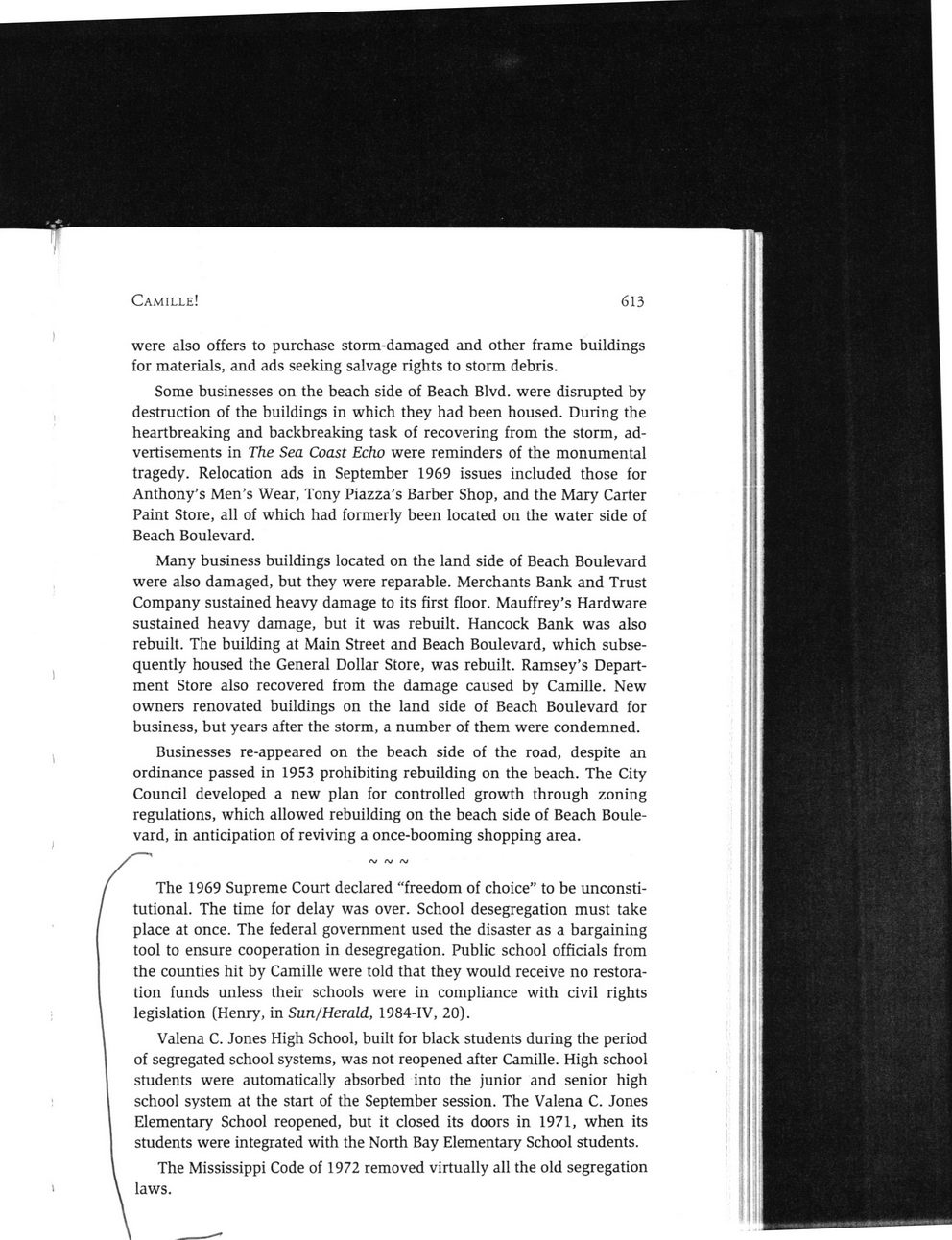This text was obtained via automated optical character recognition.
It has not been edited and may therefore contain several errors.
Camille! 613 were also offers to purchase storm-damaged and other frame buildings for materials, and ads seeking salvage rights to storm debris. Some businesses on the beach side of Beach Blvd. were disrupted by destruction of the buildings in which they had been housed. During the heartbreaking and backbreaking task of recovering from the storm, advertisements in The Sea Coast Echo were reminders of the monumental tragedy. Relocation ads in September 1969 issues included those for Anthony?s Men?s Wear, Tony Piazza?s Barber Shop, and the Mary Carter Paint Store, all of which had formerly been located on the water side of Beach Boulevard. Many business buildings located on the land side of Beach Boulevard were also damaged, but they were reparable. Merchants Bank and Trust Company sustained heavy damage to its first floor. Mauffrey?s Hardware sustained heavy damage, but it was rebuilt. Hancock Bank was also rebuilt. The building at Main Street and Beach Boulevard, which subsequently housed the General Dollar Store, was rebuilt. Ramsey?s Department Store also recovered from the damage caused by Camille. New owners renovated buildings on the land side of Beach Boulevard for business, but years after the storm, a number of them were condemned. Businesses re-appeared on the beach side of the road, despite an ordinance passed in 1953 prohibiting rebuilding on the beach. The City Council developed a new plan for controlled growth through zoning regulations, which allowed rebuilding on the beach side of Beach Boulevard, in anticipation of reviving a once-booming shopping area. <v f\t rw The 1969 Supreme Court declared ?freedom of choice? to be unconstitutional. The time for delay was over. School desegregation must take place at once. The federal government used the disaster as a bargaining tool to ensure cooperation in desegregation. Public school officials from the counties hit by Camille were told that they would receive no restoration funds unless their schools were in compliance with civil rights legislation (Henry, in Sun/Herald, 1984-IV, 20). Valena C. Jones High School, built for black students during the period of segregated school systems, was not reopened after Camille. High school students were automatically absorbed into the junior and senior high school system at the start of the September session. The Valena C. Jones Elementary School reopened, but it closed its doors in 1971, when its students were integrated with the North Bay Elementary School students. The Mississippi Code of 1972 removed virtually all the old segregation laws.

Jones, Valena C 011